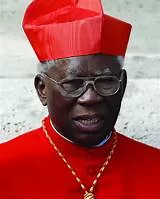
FOUR REMAINING BISHOPS WHO ATTENDED SECOND VATICAN COUNCIL
As the Catholic Church continues to evolve in the 21st century, just four bishops remain who can say they witnessed, firsthand, the revolutionary changes ushered in by the Second Vatican Council. These surviving Council Fathers—now advanced in age—stand as living bridges to one of the most transformative moments in modern Catholic history.
Held between 1962 and 1965, the Second Vatican Council redefined the Church’s relationship with the modern world. It introduced sweeping liturgical reforms, including the use of vernacular languages in Mass, encouraged greater engagement with other Christian denominations, and called for a more active role for the laity.
Today, as of May 2025, only four prelates who participated in those sessions are still alive.
Cardinal Francis Arinze: youngest Bishop at the council
Born on November 1 1932 in Nigeria, Cardinal Francis Arinze was just 32 years old when he attended the final session of the Council in 1965—making him the youngest Catholic bishop in the world at the time. Consecrated as coadjutor bishop of Onitsha by Archbishop Charles Heerey earlier that year, Arinze would go on to become a prominent voice in the global Church. He was elevated to the College of Cardinals in 1985 by pope John Paul II and later served as prefect of the Congregation for Divine Worship and the Discipline of the Sacraments from 2002 to 2008, playing a key role in the implementation of liturgical reforms. He was one of the principal advisors to Pope John Paul II and was considered as a likely Pope candidate at the papal conclave that elected Pope Benedict XVI in 2005.
Archbishop Victorinus Youn Kong-hi
Archbishop Victorinus Youn Kong-hi, born on November 8 1924, took part in three of the Council’s four sessions as Bishop of Suwon. He was ordained a priest of the Archdiocese of Seoul on March 20, 1950.He later became Archbishop of Gwangju and was a leading figure in the Church in South Korea, serving as president of the national bishops’ conference. Now aged 100, Youn represents the Asian Church’s quiet but steady contribution to Vatican II’s global vision.
Bishop José de jesús Sahagún de la Parra
At 103 years old, Bishop José de Jesús Sahagún de la Parra of Mexico is the oldest living Council Father. He attended the first, second, and fourth sessions of the Council as bishop of Tula. Among the last Latin American bishops present at Vatican II, Sahagún de la Parra remains the sole surviving participant from the Americas. He is the oldest living Catholic bishop and the last living bishop appointed by Pope John XXII. His memory links the contemporary Church to a past rich in both theological debate and pastoral ambition.
Bishop Daniel Verstraete: missionary bishop from Africa’s South
Belgian-born Bishop Daniel Alphonse Omer Verstraete, a member of the Oblates of Mary Immaculate, was 41 when he participated in the final session of the Council as prefect of the Apostolic Prefecture of Western Transvaal in South Africa. Born on July 31 1924, Verstraete later became Bishop of Klerksdorp, where he continued the Council’s call for evangelisation and renewal in a post-colonial African context. Now aged 100, his life reflects the missionary spirit that Vatican II sought to invigorate.
 Premium News
Premium News